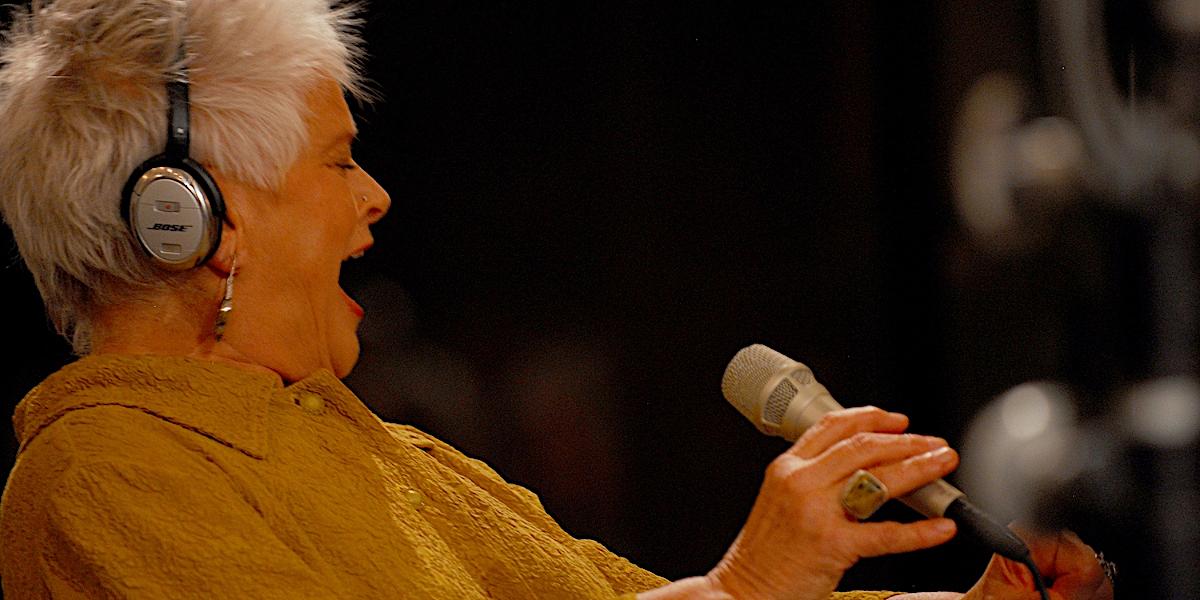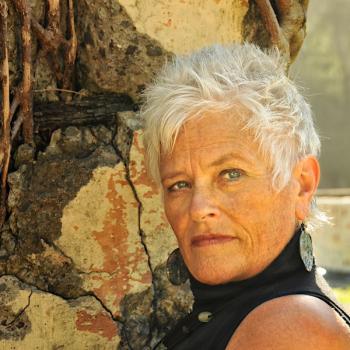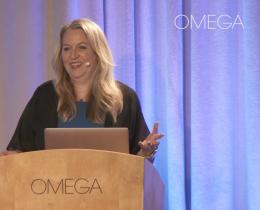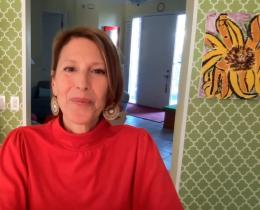Rhiannon grew up on a farm on the South Dakota-Nebraska border on the banks of the Missouri River. She did a lot of singing growing up, she says. Today, she makes her home on Hawaii Island, combining farming and art, and leading workshops and retreats at home and abroad.
Early on, she taught song form and then became interested in how to teach improvisation, which is essentially teaching listening, forgiveness, trust, and collaboration, she says. Writing came next, and she decided that if she wanted her students to hear her ideas as clearly as she could put them down, she needed to be write a book. Vocal River: The Skill and Spirit of Improvisation was born.
“For an improvisor to write a book is a conundrum, an oxymoron,” Rhiannon says. “But then I realized I do have a process. What I discovered meeting Bobby [McFerrin] and working with him and then beginning to develop my own ideas about it is that people don’t understand that improvisation has skill-building in it. They think of it as open your mouth and whatever comes out, comes out—that’s improvisation.
“I want to build the skill set and grow musical skills,” she says. “If you’re separating music from improvisation, that’s a dead end. What you want is to understand improvisation as part of the musical curriculum.”
Vocal River is a guide to Rhiannon’s methods of teaching improvisation, featuring 33 detailed exercises that bring readers into the circle of music—from simple breathing exercises and duet exercises to more complicated large ensemble exercises and performance improvisation—step by step, they learn about blend, collaboration, soloing, listening, skill, faith, and generosity.
“We need teachers to teach these ideas,” she said. “This is a book for anyone interested in being flexible. Let the music that you have sung and the music you haven’t sung bubble up, and allow you to think of yourself as willing and happy to read a book about music. Music’s possible in everybody’s life—why not?”
Teaching Improvisation Tip #1: How to Create a Vocal Pattern
One of the first exercises in Vocal River is a series called “Spirolution.”
Rhiannon creates a vocal pattern—a simple repeating pattern that everyone sings.
“Everybody starts singing it and when I can see everybody’s got the idea and they’re relaxed, then I hold my hand up,” she says. “And the next time, I sing that pattern but I change it just a little bit and then they sing that rearranged pattern back to me.”
They then return to singing the original pattern so it is not forgotten. The process continues around the circle with each person doing a variation on the form and then returning to the original pattern.
(Listen here)
What you learn from that experience is how to listen and be able to retain a pattern idea.
In improvisation as in song form, you are composing, she says. So you want to be able to hold on to an idea and be able to recycle it later in the piece. You want to be present in the idea.
Teaching Improvisation Tip #2: Flexibility in a Traditional Classroom Setting
“I experience music in my life as a spiritual path,” Rhiannon says. “I hope that other people will respond to it that way as well. But they have to find their own ways of doing that.”
Rhiannon says there are similarities between improvisation and meditation.
“In meditation you’re trying to stay present in the moment,” she says. “It’s the same in improvisation.”
She often starts by having participants do a single unison tone together, singing it for a minute or so.
“There’s something about getting all the sound waves to align that’s very relaxing and simplifying for the mind,” she says. “You’ve got to get the mind not to be the driver.”
Teaching Improvisation Tip #3: Building a Spontaneous Language
Rhiannon often guides participants in singing harmonics spontaneously.
“Somebody changes the pitch and you hold that pitch the whole length of your breath so there’s a chance for chords to develop,” she says.
From there the group moves from vocalizing to a personal language where people begin to sing in a kind of spontaneous language that they are inventing at that moment.
(Listen here)
There’s no pressure to be clever, Rhiannon says. Everybody is doing it at once so there is a lot of sound.
“It’s a spirit kind of connection, ancestral connection,” she says. “It’s not gibberish. It’s really trying to sound like a language, as though you’ve been dropped in somewhere and you’re speaking this language you don’t quite understand.”




